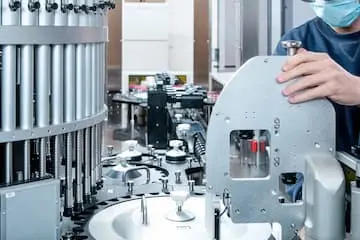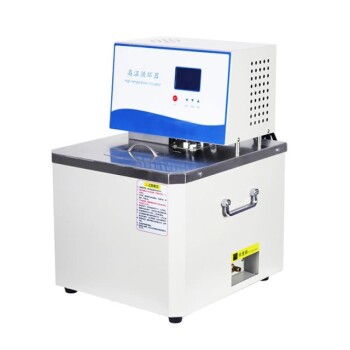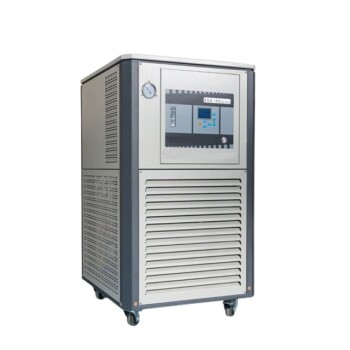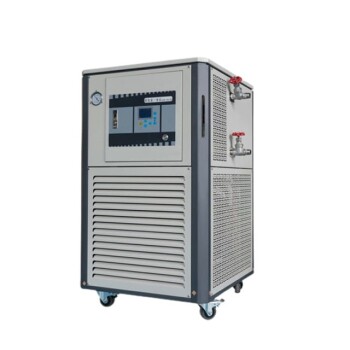A heater circulator is a laboratory device that combines an open or closed bath with a heating system to maintain a specific temperature range. It is used for a wide range of applications, including heating internally or externally. Heater circulators are ideal for experiments that require precise and consistent temperature control. They are equipped with a liquid reservoir, a heating system, and a temperature control mechanism. Some models are designed to work in conjunction with a separate liquid bath or water jacket, while others combine both a circulator and an open bath basin/water jacket in one.
Toggle Categories
Get Instant Support
Choose your preferred way to connect with our team
-
Get Free Quote Fill out form for detailed pricing
-
Send Email Detailed inquiry support
-
WhatsApp Quick mobile chat
Response Time
Within 8 hours on working days, 24 hours on holidays
heater circulator
Our Heater Circulator products are designed to provide consistent and precise temperature control for liquid baths used in dissolution testing and other experiments. Our extensive portfolio offers a wide range of temperature capabilities, and digital temperature control for ease of use and customization. Whether you need an open or closed bath basin, our Heater Circulator solutions have got you covered.
Applications of Heater Circulator
- Maintaining precise and consistent temperatures in laboratory experiments
- Dissolution testing in pharmaceutical research and development
- DNA amplification and PCR (polymerase chain reaction) in genetic research
- Temperature control in microbiological cultures
- Heating and circulation of fluids in chemical reactions and synthesis
- Maintaining viscosity of liquids in food and beverage production
- Temperature control in material testing and analysis
- Environmental testing and simulation of extreme temperatures and conditions.
Advantages of Heater Circulator
- Precise temperature control for experiments involving liquid baths
- Wide temperature range from -90°C to 300°C
- High heat load removal of up to 1000 watts
- Can be used for both internal and external heating applications
- Ideal for maintaining temperature set points over long periods of time
- Can be used with a variety of sample containers such as flasks and beakers
- Offer consistent and accurate temperature control
- Saves time and improves efficiency in laboratory experiments
- Reduces the risk of sample contamination and experimental errors
- Offers ease of operation and low maintenance
Our Heater Circulator is an economical solution that provides precise temperature control. It has an open or closed bath for internal or external heating. With a temperature range of –90 to 300°C and heat removal capacity of up to 1000 watts, it is ideal for maintaining a few temperature set points over a long period. Additionally, our custom design service enables us to cater to your specific needs.
FAQ
What Is A Heated Circulator?
What Is The Purpose Of A Heater Circulator?
How Does A Heater Circulator Work?
What Types Of Fluids Can Be Used With A Heater Circulator?
Can A Heater Circulator Be Used For Cooling Applications?
REQUEST A QUOTE
Our professional team will reply to you within one business day. Please feel free to contact us!
Related Articles

How to Choose and Optimize Water Circulating Vacuum Pumps for Your Lab
Learn how to choose and optimize water circulating vacuum pumps for lab applications, balancing efficiency and reliability.

How Laboratory Freeze Dryers Outperform Alternatives in Pharma, Food, Biotech & Research
Discover how lab freeze dryers outperform traditional methods in pharma, food, biotech & research—preserving potency, nutrients & integrity.

Upright vs. Chest ULT Freezers: How to Choose the Right Configuration for Your Lab
Compare upright vs. chest ULT freezers for your lab: temperature stability, workflow efficiency, and cost analysis to protect sensitive samples.

How ULT Freezers Prevent Catastrophic Loss of Microbiological Samples
ULT freezers safeguard microbiological samples with advanced temperature control, contamination prevention, and emergency backup systems to prevent catastrophic loss.

Understanding the Functionality of Cryogenic Cold Traps
An in-depth look at how cryogenic cold traps operate and their applications in various fields.

Optimal Cold Trap Temperature in Freeze Drying: Balancing Efficiency and Performance
Exploring the impact of cold trap temperature on freeze-drying efficiency and equipment performance.

Distinguishing Between Condensers and Coolers in Refrigeration Systems
Explores the key differences between condensers and coolers in chiller refrigeration systems, focusing on phase change, heat transfer coefficients, and series heat exchangers.

Choosing the Right Heating Method in Laboratory Experiments
Understanding the differences between metal bath, water bath, and thermostat heating methods for various lab experiments.

Laboratory Water Bath Instructions for Use
Guidelines for operating and maintaining laboratory water baths for safe and effective use.

Comprehensive Guide to Thermostatic Water Baths
Detailed overview of thermostatic water baths, including usage, precautions, common issues, maintenance, and calibration.

Features and Precautions of Laboratory Water Bath Equipment
An overview of the features and safety precautions for laboratory water bath equipment.

Preparation and Finishing Work for Using a Low-Temperature Thermostatic Reaction Bath
Guidelines on preparatory and finishing tasks for using a low-temperature thermostatic reaction bath.

Guide to Using and Maintaining Constant Temperature Water Baths
Detailed instructions on using and maintaining constant temperature water baths for optimal performance in laboratory settings.

Laboratory Heating Equipment Safety
Discusses the importance of safety in using electrothermal thermostatic water baths and constant temperature oil baths in laboratories.

Constant Temperature Water Bath: Use, Maintenance, and Operation
Guide on using, maintaining, and operating a constant temperature water bath for scientific experiments.

Four Major Advantages of Molecular Distillation Over Traditional Distillation
Exploring the key benefits of molecular distillation in comparison to traditional methods.

Laboratory Jacketed Vessels
Overview of jacketed vessels, their types, and applications in various industries.

Safety Hazards and Precautions for Laboratory Heating Equipment
Guidelines on common heating equipment and safety measures in lab settings.

Calibration Methods for High-Temperature Muffle Furnaces
Explores traditional and system calibration methods for ensuring temperature accuracy in high-temperature muffle furnaces, focusing on temperature deviation and uniformity.

Temperature Control Accuracy of High Temperature Experimental Chamber Muffle Furnace
An in-depth analysis of factors affecting the temperature control accuracy of high temperature muffle furnaces.



